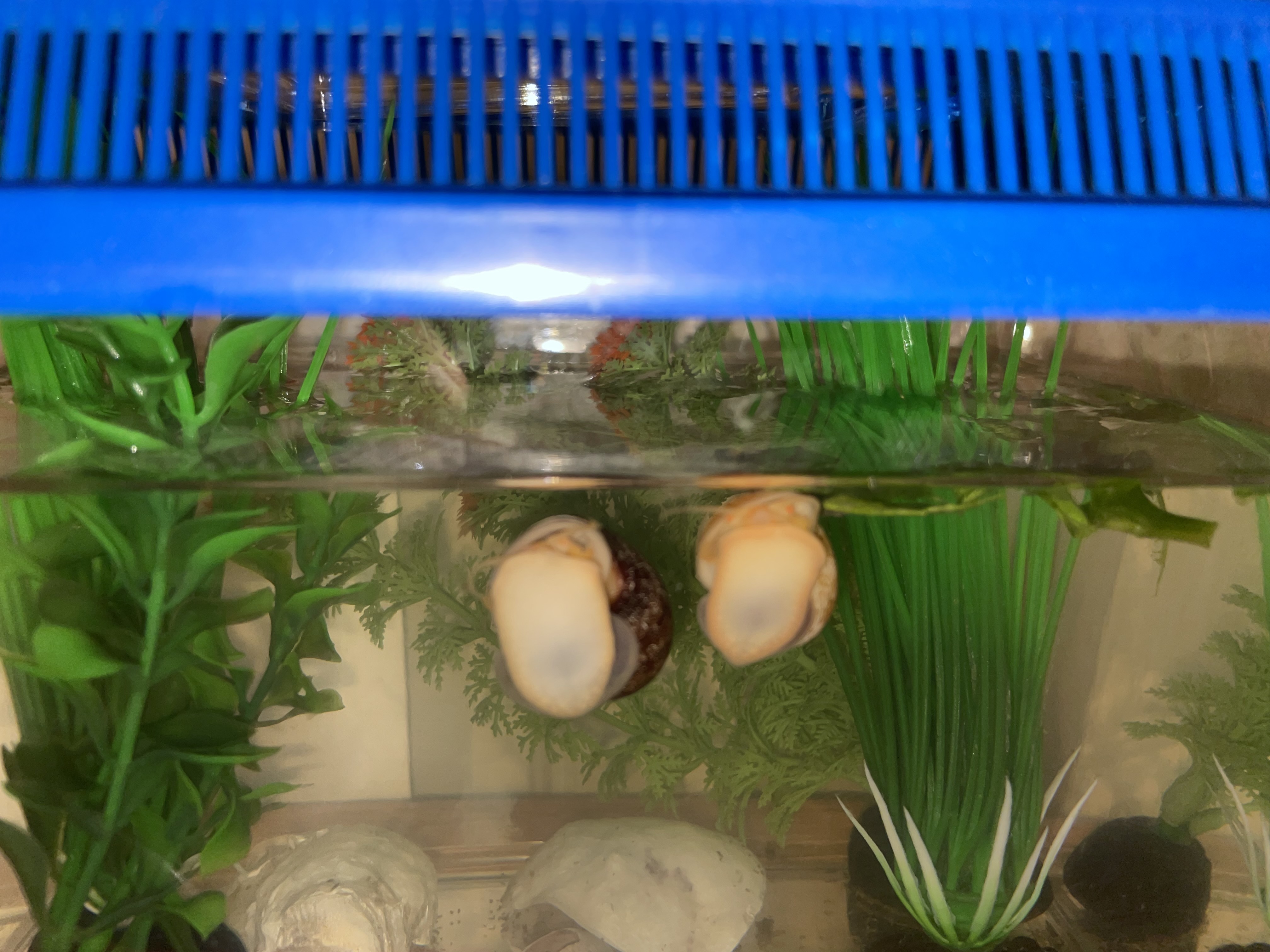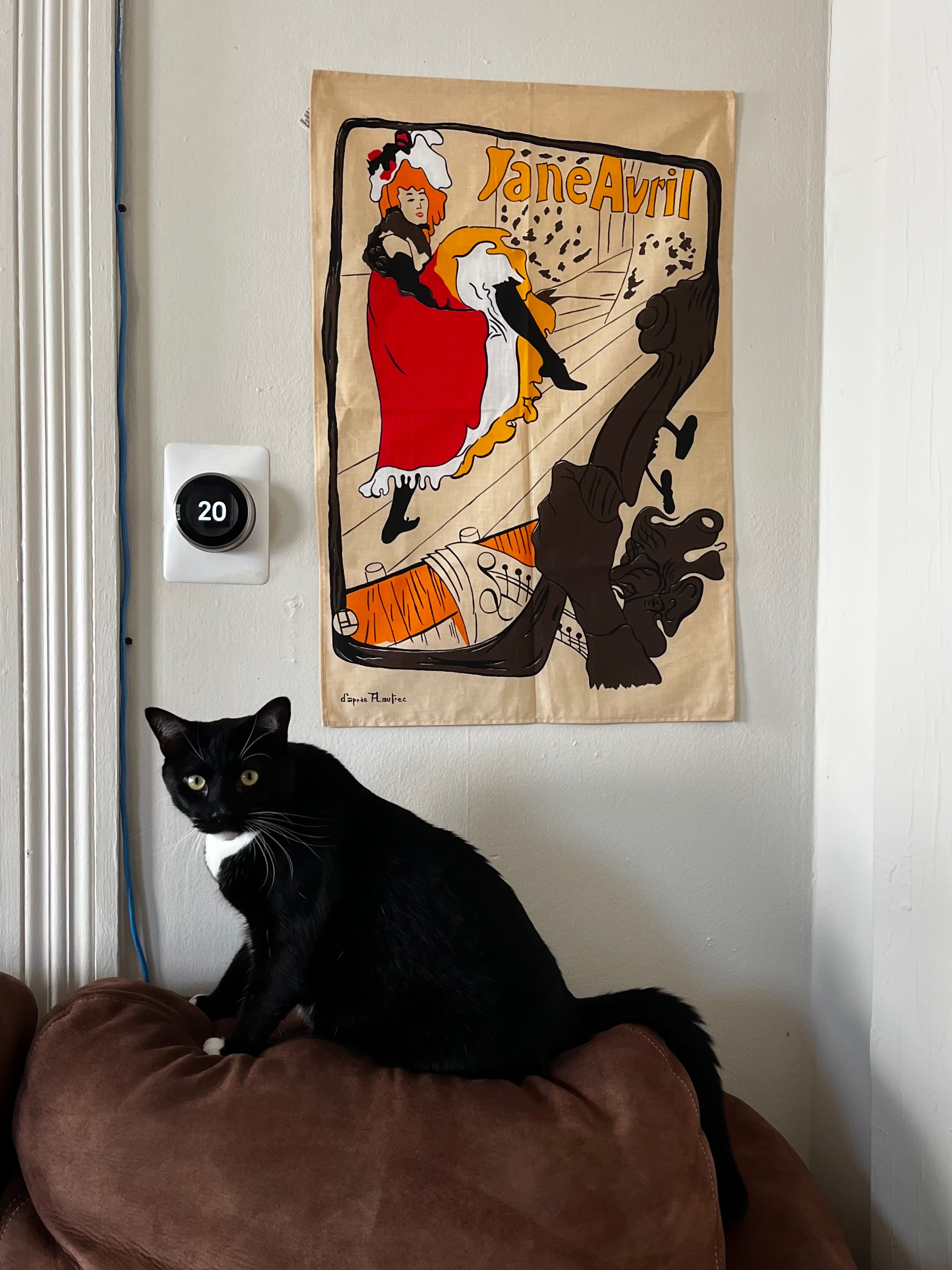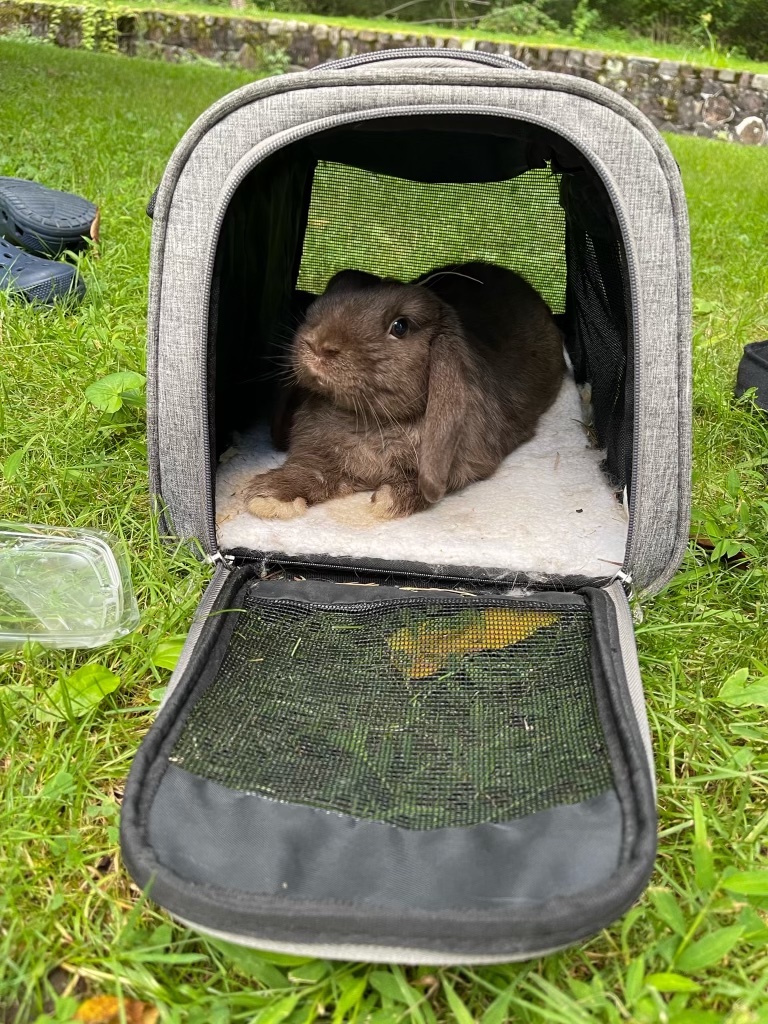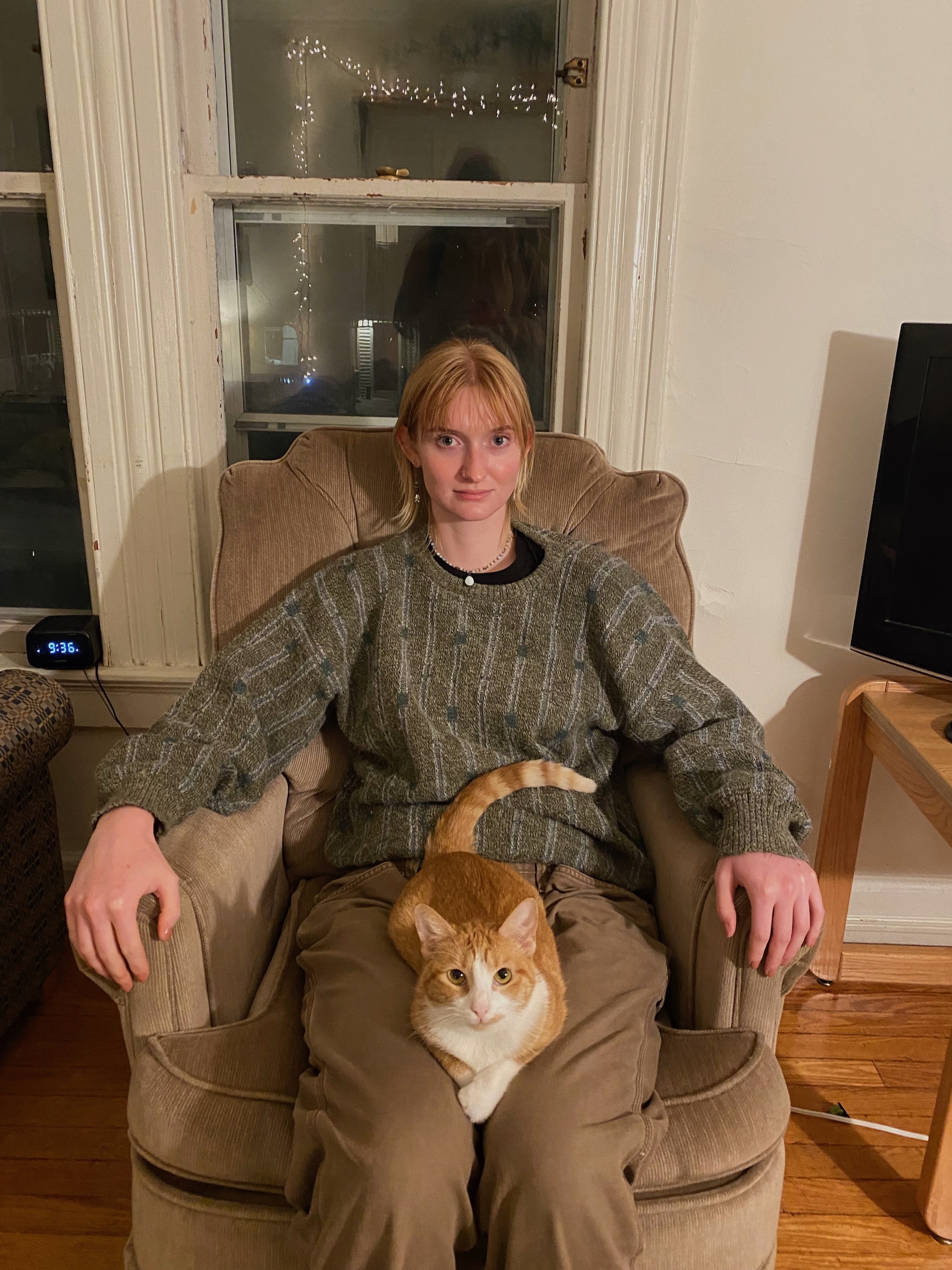Have you ever entered your Wesleyan bedroom, whether in a dorm room or a wood frame house, and felt a little lonely? Do you yearn for the sound of scurrying, the sight of nibbled charging cords, or the gurgle of a fish tank? If so, you are not alone. There are a plethora of fellow animal lovers on campus who are housing their own furry (or otherwise textured) friends.
According to the University’s Pet Policy: “Pets are not permitted in any student housing.” However, emotional support animals (ESAs) and service animals are allowed. While this may set these animals apart from what we would normally think of as a pet, it doesn’t make them any less enjoyable.

c/o Sarah Sarak
The only exception to this no-pets rule is “fish in 10 gallon tanks or smaller,” a policy that Sofia Sarak ’25 has taken advantage of. She is the proud owner of two snails on campus: Butter and Mousse. While a seemingly unconventional choice to some, for Sarak these snails are the perfect Wesleyan Pet.
“I’m an Environmental Science major,” Sarak said. “I worked for an environmental nonprofit this summer and a lot of the work we did was on the Long Island Sound and with water, and all the animals that live there. And there are a ton of snails in the Long Island Sound. Then one day, I was like, oh my god, I can totally just take a snail, have it as a pet. That’s so easy. And that’s kind of where the idea of having a pet snail came into my head.”
As someone living in a dorm room, it is often not feasible, and arguably not ethical, to have larger animals in such a tight space. However, Sarak noted that the snails are easy to take care of in cramped quarters, even if she does worry every now and again about their well-being.
“Sometimes I get a little worried they’re dying because they don’t really move,” Sarak said. “They move but sometimes they’re not as active which is totally normal. But then I freak out, and I’m like, oh my god, I killed them. But no. They’re fine, they’re good, they’re super easy to take care of. I just put in an algae pellet once a week.”
Those living in slightly larger spaces, like senior houses, have taken advantage of the communal living environment to raise their own fluff balls. Nora Butler ’24 and her two-year-old tuxedo cat Elio are living together in a senior house this year and couldn’t be happier.

c/o Nora Butler
“I think it has made my house dynamic [feel] very much like a home,” said Butler. “I feel like just the presence of a cat really creates this sense of a community. I think it’s tied my roommates and I together and it makes life a little easier.”

c/o Sophie Chang
This sentiment of community was reiterated by other pet owners on campus including Sophie Chang ’24. She lives in a senior house with her six-month-old bunny named Tilly.
“I think she really improves my quality of life and the quality of life of everyone in the house,” Chang said. “We always have bunny time every day. It’s nice to live in a house and have a pet and not in a dorm because she gets a lot of attention from everyone who lives here. She’s sort of like a fourth roommate.”
Tilly is Sophie’s second bunny on campus, and having multiple animals at the University has shown her how unique each experience can be.
“I guess it’s interesting to see their differences,” Chang said. “They have really different personalities. I think Tilly shows affection less. Just in less obvious ways. Kora [Chang’s first bunny] would give a lot of kisses and be a lot more active, which Tilly doesn’t really do. But she’ll sometimes surprise us. Yesterday, she was chilling in here, and she just jumped three feet in the air. That’s really a sign of joy.”
While every animal is different, each comes with their own set of responsibilities. Their own ups and downs. This is particularly felt by Erin Readling ’24, who a one-and-a-half year-old orange cat named Persimmon (aka Persi).

c/o Erin Readling
“Persi is often the highlight of my day,” Readling said. “She can really make or break the day. Sometimes I’m having a really bad day and just having some time with her on my lap, petting her and cuddling her, will just make the day better. And sometimes I’m having a great day, and she’ll pee on my bed. But she keeps things entertaining.”
As another owner of a cat, Butler echoed the idea that they can be slightly mischievous creatures at times and that maybe their reputations precede them. As new people have visited and hung out with Elio, she noted that he has become the talk of the town among friends.
“Well, there’s been rumors floating around that he’s a biter, but he’s actually not,” Butler said. “He’s a bit of a lover, if anything.”
As a roommate rather than owner of a pet, Readling’s relationship with her animal in residence is unique.
“I didn’t necessarily want to get a pet myself, because I didn’t know where I was going to be in five years,” Readling said. “And I didn’t want to adopt an animal that I wouldn’t know what to do with later. But my friend and roommate Lia [Franklin ’24] needed an emotional support animal, and I fully supported her in that decision.”
While animals can provide a lot of joy for the people around them, navigating the University can be more difficult with service animals. Lily Lewis ’27, owner of her service dog Kingsley, reflected on the intricacies of having a service animal, specifically in crowded areas.

c/o Lily Lewis
“I do think that there could be slightly better education on service animal protocol,” Lewis said. “Just because the first day that he was here, he just got grabbed a lot. Which is kind of my fault because I do let people pet him. It’s just hard to say no. I’m fine, letting my friends pet him and whatever. But that first day was really hard. I wish I had known what the events would entail better. I wouldn’t have brought him if I knew that we were going to be screaming and cheering because generally no dog, no matter how well-trained of a service animal they are, is going to love 800 people screaming at the top of their lungs.”
However, Lewis also noted that Kingsley has become very social at the University and allowed her to meet new people just by walking around with him.
“He actually made a friend,” Lewis said. “She’s a junior. She’s so sweet. And she took him on a run. And he came back and fell asleep immediately.”
Lewis doesn’t want to discourage people from interacting with Kingsley, as he is a very social dog. She just wants people to be more aware that service animals can have different restrictions depending on the animal. And if you don’t know, ask!
“If people want to say hi, Kingsley literally loves attention more than life itself,” Lewis said. “So they’re welcome to say hi to him. They just have to ask, and then they’re absolutely allowed to say hi.”
This article is a love letter to anyone on campus who has an animal: Please send me and the rest of The Argus team the pictures that I know you obsessively take of them.
Lia Franklin can be reached at lfranklin@wesleyan.edu
Nirvaan Mehta can be reached at nmehta@wesleyan.edu.